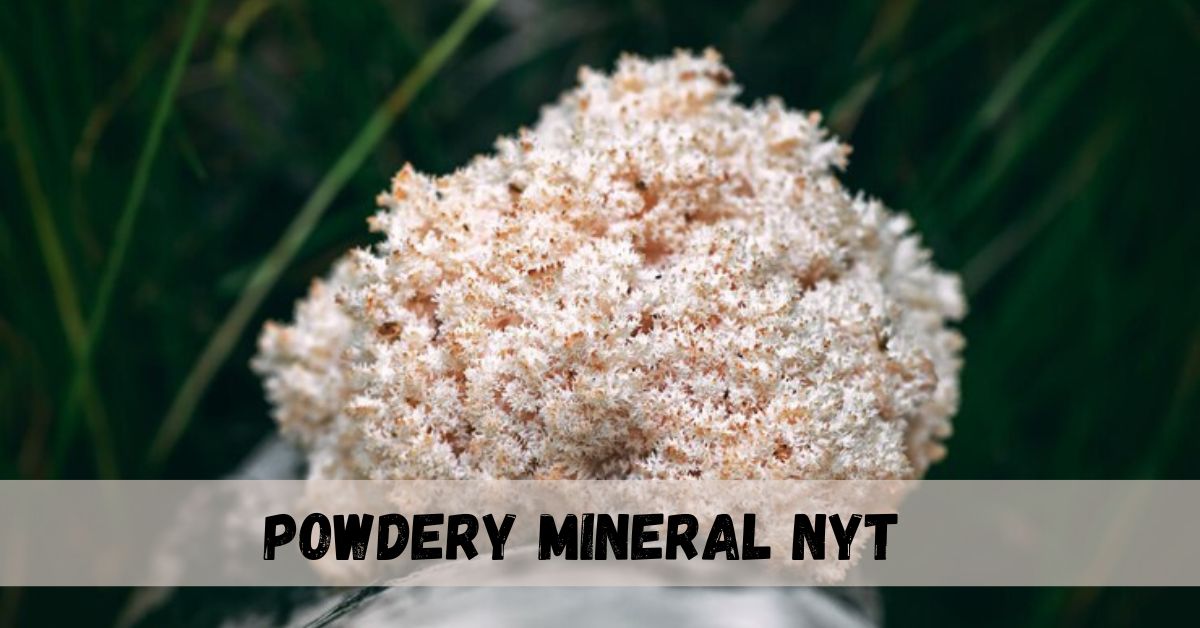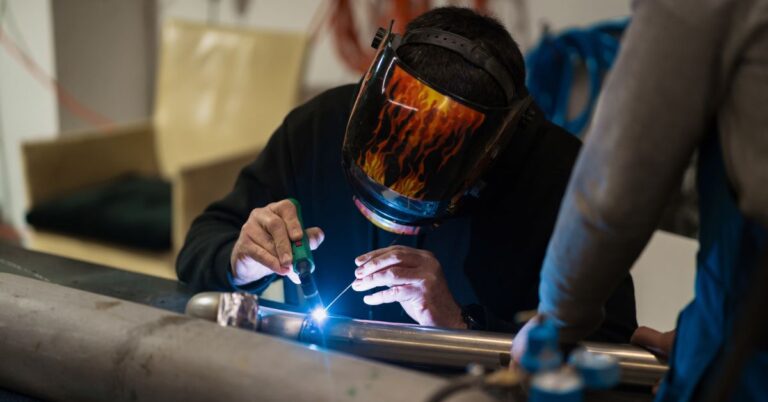Powdery Mineral NYT: A Fascinating Element of Nature

Minerals are the building blocks of our planet, forming the foundation of our earth’s crust, and among them, certain types have captured the imagination of scientists, collectors, and the general public alike. One such topic that has garnered attention is the “powdery mineral nyt,” a mysterious and intriguing material that frequently surfaces in geological discussions and popular media.
What Exactly is a Powdery Mineral?
Powdery minerals are a category of naturally occurring substances characterized by their fine, powder-like texture. Unlike the solid masses or crystalline shapes we commonly associate with minerals, these substances automatically break down into minuscule particles when handled. From talc, known for its application in talcum powder, to gypsum, which forms the backbone of plasters and drywall, powdery minerals have a remarkable diversity of forms and uses.
The term “powdery mineral nyt” adds a layer of curiosity to this subject. Often seen in newspaper articles, academic discussions, and scientific blogs, this phrase represents both a classification of minerals whose primary state is powder and a trending topic due to the increasing interest in these substances’ properties and potential uses. Why has the “powdery mineral nyt” become such a focal point? To fully understand, we must explore its role in history, its scientific significance, and its modern applications.
You May Like : Exploring the Essence of Montemscopa
The Historical Significance of Powdery Minerals
Throughout history, powdery minerals have played a pivotal role in human development. Ancient civilizations used colorful mineral powders for pigments in painting or makeup, demonstrating early recognition of their versatile applications. For example, ochre, a naturally occurring powdery mineral, has been used in prehistoric art found on cave walls dating back tens of thousands of years.
Powdery minerals also hold a place of importance in medicine. Crushed and powdered natural substances were early forms of chemotherapy and topical ointments, long before the advent of modern medicine. The healing properties of minerals like sulfur and kaolin, a white powdery clay, were studied and applied to treat skin conditions and purify wounds.

Fast-forward to today, and the “powdery mineral nyt” continues to contain historical significance and scientific intrigue. Publications such as The New York Times (NYT) highlight the cultural and technical importance of powdery minerals, offering insights into their role in shaping both ancient and contemporary societies.
Scientific Characteristics of the Powdery Mineral NYT
To better understand the relevance of powdery minerals, we need to consider their physical and chemical properties. Powdery minerals are often lightweight and fine in texture, making them easy to transport and manipulate. Their composition varies wildly depending on their origin, ranging from the silicate-based powders of volcanic regions to calcium sulfate deposits commonly found in sedimentary layers.
The term “powdery mineral nyt” can symbolically link the reader to a broader conversation about how these minerals behave chemically. For instance, many powdery minerals are highly reactive under different environmental conditions. This reactivity makes powdery minerals useful in everything from industrial processes to agriculture, as they interact directly with the environment when introduced to soil, water, or construction materials.
Many scientific studies also focus on the optical properties of powdery minerals, particularly their ability to scatter light. This makes powdered forms ideal for cosmetics, paints, or other applications where diffusion and coverage are important. The powdery mineral nyt isn’t just a material; it represents a window into how geology influences modern lives.
Industrial Applications of Powdery Minerals
Powdery minerals are a vital component in industries worldwide. Their unique properties have found applications in construction, manufacturing, pharmaceuticals, and even technology. Talc, one of the most well-known powdery minerals, is widely used to manufacture ceramics and as a filler material in the paper industry. Similarly, powdered calcium carbonate is a core ingredient in producing concrete and cement, vital to the construction industry.
The “powdery mineral nyt” phenomenon can refer to how these minerals are written about in major publications due to their undeniable economic impact. Because industrial demand for easily manipulated or efficiently produced materials continues to grow, the study and extraction of powdery minerals remain essential parts of resource geology.
Another significant application lies in the field of soil enhancement. Powdery forms of minerals like gypsum are frequently used in agriculture to nourish soils depleted of essential nutrients. Farmers rely on these minerals to increase crop yields while combating the effects of soil erosion or salinity. The insights provided by the study of the powdery mineral nyt allow us to maximize these benefits while addressing ecological concerns.
The Role of Powdery Minerals in Sustainable Development
Sustainability is one of the most pressing challenges of both current and future generations, and powdery minerals offer valuable opportunities to make our industries greener. For example, powdered limestone plays a key role in reducing sulfur dioxide emissions from power stations, effectively limiting greenhouse gas impacts.
Publications like those referencing the powdery mineral nyt have also brought attention to the role of minerals in recycling processes. Many minerals that naturally occur in powder form are used to filter and treat waste products, whether in water treatment plants or industrial recycling operations. Magnesium-based powders, for example, are used in removing heavy metals from wastewater streams, while zeolites are known to adsorb harmful substances such as ammonia.
The ability to harness the power of the powdery mineral nyt within these environmental contexts represents a critical advance in pursuing sustainable development goals. By combining geological knowledge with innovative engineering, researchers and manufacturers can make better use of natural resources while minimizing harm to the planet.
Cultural and Artistic Importance of Powdery Minerals
Beyond industry and science, powdery minerals hold a special place in art and culture. For centuries, human creativity has been guided by the breathtaking colors and textures achieved through finely ground minerals. Lapis Lazuli was once ground into powder to create ultramarine, the most expensive blue pigment during the Renaissance. Similarly, iron oxide-based ochres continue to be celebrated for their warmth in art.
Today, discussions around the powdery mineral nyt focus not only on cutting-edge industries but also on preserving its rich cultural associations. Publications and forums ensure that these minerals’ artistic significance isn’t lost amid technological progress. The blending of tradition with modernity allows artists and creators to innovate while honoring centuries of craftsmanship.
The Future of Powdery Minerals
The ongoing research into powdery minerals unveils an even broader spectrum of potential applications for the future. Whether it’s sourcing alternative energy through mineral-based fuel cells or using powdered substances in innovations like 3D printing materials, the “powdery mineral nyt” remains a promising subject for discussion.
These minerals may even have extraterrestrial applications, as their structure is well-suited for use in environments like the Moon or Mars. NASA and other space organizations have investigated powdered minerals as potential building materials for colonies in space due to their versatility and ease of transportation compared to solid blocks.
The interest in powdery minerals stems from their adaptability, widespread abundance, and potential to meet future societal demands. The solutions, knowledge, and benefits they offer ensure that powdery minerals retain relevancy in natural sciences, engineering, and our daily lives.
Why the Powdery Mineral NYT Deserves Our Attention
There are many reasons why the term “powdery mineral nyt” continues to captivate readers and researchers alike. It serves as a gateway into the diverse and complex world of powdery minerals, inviting us to consider how this natural resource applies across various facets of modern society.
As we continue to explore the rich nuances of powdery minerals—whether through cultural reflections, industrial applications, or environmental advancements—their stories remain as compelling as they are informative. For anyone curious about the intersections of geology, history, and the future, the powdery mineral nyt provides fertile ground for discovery. It’s not just a powdered form of dirt—it’s the essence of human innovation woven into the fabric of nature.
Read More : Discovering the Potential of Shortengine.com






